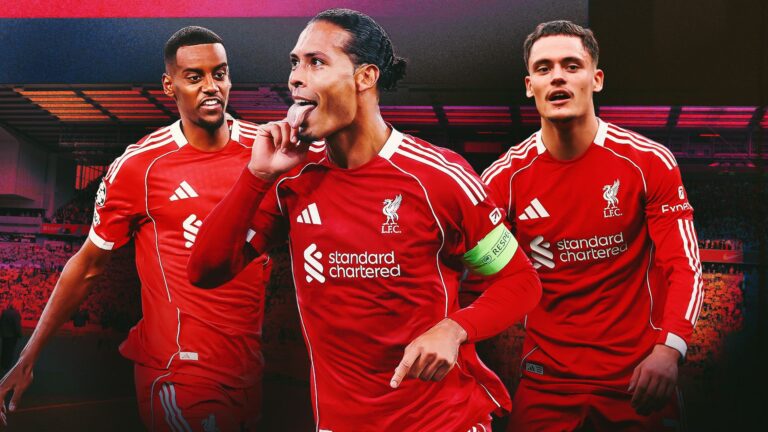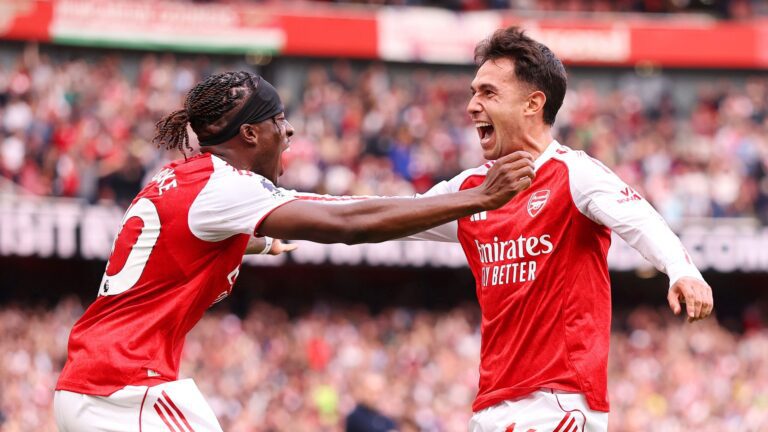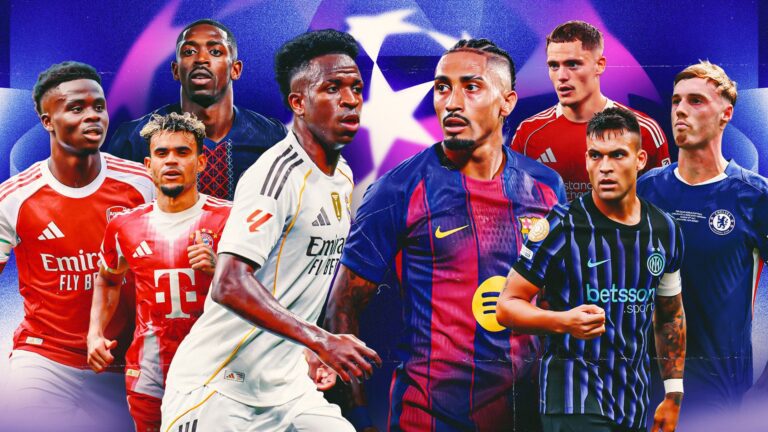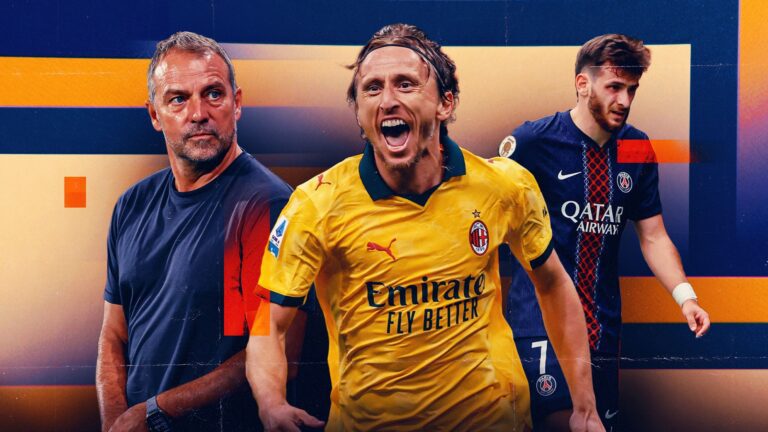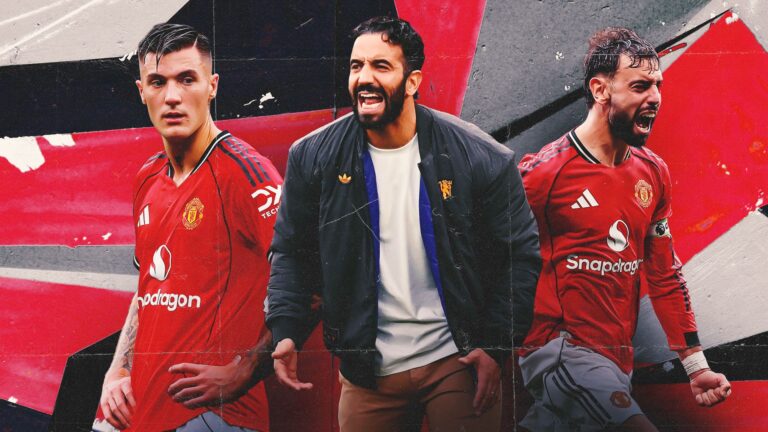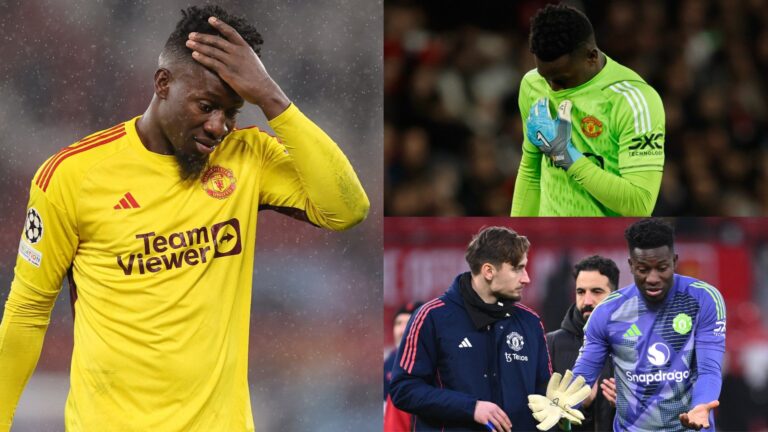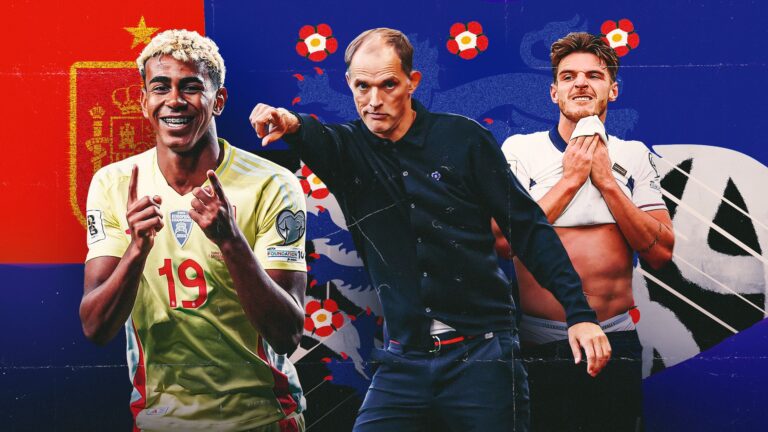Is Reinstating Ole Gunnar Solskjaer the Smart Strategy for Manchester United’s Revival?
Recent discussions highlight that current manager Amorim faces mounting pressure with just three crucial matches to secure his position, sparking talk of bringing back club icon Ole Gunnar Solskjaer. During his earlier tenure, Solskjaer led Manchester United to a commendable second spot in the Premier League for the 2020-21 season, skillfully adopting a fast-break approach reminiscent of the triumphant Sir Alex Ferguson years. This raises a pivotal question: Can welcoming back a familiar face truly revitalize a team, or is it a risky gamble?
Examining historical cases, BALLGM evaluates the outcomes for 10 prominent coaches who attempted comebacks at their previous clubs, assessing both triumphs and setbacks to gauge if such moves hold lasting value.











Ranking the Top 10 Comebacks by Football Managers to Former Clubs
With the buzz around potential managerial reshuffles, it’s worth analyzing past instances where leaders returned to helm teams they once guided. This ranking spotlights 10 coaches, blending success stories with cautionary tales, updated with recent stats to reflect evolving football dynamics-like the growing emphasis on data analytics in tactics.
Frank Lampard’s Mixed Legacy at Chelsea and Beyond
Regarded as Chelsea’s standout player ever, Frank Lampard netted an impressive 211 goals across 648 appearances for the club. Yet, his managerial phase at Stamford Bridge fell short of that glory. In his initial role from July 2019 to January 2021, he achieved a solid 52.38% win rate over 84 games. Fast-forward to his interim position from April to June 2023, where results plummeted to a mere 9.09% win rate from 11 matches. Nowadays, Lampard is showing improvement at Coventry City in the Championship, boasting a 45% win rate in recent outings, highlighting his adaptability in lower leagues.
Guus Hiddink’s Impactful Interim Roles at Chelsea
Boasting a career spanning over three decades, Guus Hiddink has led teams like PSV Eindhoven and Real Madrid with distinction. When he stepped in at Chelsea after Luiz Felipe Scolari’s exit in early 2009, expectations soared. He steered the team to an FA Cup victory and nearly advanced in the Champions League semi-final against Barcelona, despite controversial officiating. His first interim yielded a 72.73% win rate, but his second from December 2015 to May 2016 saw it fall to 37.04%, lifting Chelsea from 16th to 10th in the Premier League. Notably, he set a record for the longest unbeaten run for a new manager at 12 games, a benchmark still referenced in modern analyses.
Tony Pulis’s Resilient Returns to Stoke City
Tony Pulis became synonymous with Stoke City’s defensive grit, often compared to building a fortress on the pitch. He first took charge in November 2002, posting a 35.88% win rate until June 2005. His comeback in 2006 led to Premier League promotion and a seven-year stint with a 36.64% win rate, including European competitions. This era, akin to crafting a unbreakable shield, even saw Stoke challenging top teams, underscoring Pulis’s ability to elevate underdogs-much like recent examples of teams using set-piece strategies for upsets.
Fabio Capello’s High-Standards Approach at Real Madrid
Known for his no-nonsense style, Fabio Capello brought discipline to clubs like AC Milan. At Real Madrid, his first spell from May 1996 to June 1997 resulted in a La Liga title and a 64.58% win rate. Upon returning in July 2006, he clinched another league crown, though his win rate dipped to 56%. Compared to his dominant Milan days (1991-96), this return showed the challenges of repeating past feats, especially with updated squad dynamics; recent data shows similar drops in win rates for returning managers due to player turnover.
Claudio Ranieri’s Repeated Successes with Roma
A beloved figure in football, Claudio Ranieri stands out for managing the same club multiple times, a rare achievement. After his miraculous Premier League win with Leicester in 2016, Ranieri handled Roma from 2009-11 with a 55.95% win rate, saw it dip to 50% in his brief 2019 spell, and rebounded to 61.11% in his latest from November 2024 to June 2025, securing a fifth-place finish and European qualification. This evergreen resilience mirrors managers who adapt to modern tactics, with Ranieri’s strategies evolving to include more possession-based play in recent years.
David Moyes’s Turnaround at West Ham
Following a tough exit from Sunderland in 2017 after relegation, David Moyes’s appointment at West Ham in November that year was met with skepticism. He ensured survival with a 29.03% win rate, but fans pushed for change. His 2019 return transformed the club, achieving European spots and a 2023 Conference League win, boosting his rate to nearly 45%. This revival, similar to coaches who rebuild through youth integration, contrasts with West Ham’s current struggles, where updated stats show a 30% dip in form since his departure.
Jose Mourinho’s Dynamic Eras at Chelsea
Dubbed the ‘Special One,’ Jose Mourinho revolutionized Chelsea upon arrival in 2004, fresh from Champions League glory with Porto, delivering a domestic double. His first term yielded a 2.22 points per game average. Returning in 2013, he added another double but saw it fall to 1.96 points per game, leading to his exit after nine losses in 16 games by December 2015. This pattern, like other high-profile comebacks, highlights the pressure of expectations, with recent analyses noting Mourinho’s adaptation to counter-attacking styles in his later roles.
Zinedine Zidane’s Dominant Spells at Real Madrid
Transitioning seamlessly from player to manager, Zinedine Zidane elevated Real Madrid, winning three consecutive Champions Leagues in his first stint from January 2016, alongside La Liga and other titles, with a 70.47% win rate. His 2019 return maintained success with a league title, though the rate dropped to 60.53%. As a proven winner, Zidane’s approach, akin to fine-tuning a high-performance engine, continues to influence modern management, with recent updates showing his tactics’ effectiveness in player retention strategies.
Jupp Heynckes’s Triumphant Returns to Bayern Munich
From scoring prowess as a player to managerial excellence, Jupp Heynckes excelled at Bayern Munich across three stints. His initial period saw a 57.07% win rate and back-to-back Bundesliga titles. The 2013 return brought a treble, and his 2017 spell added another league crown. This consistency, comparable to architects rebuilding empires, demonstrates longevity, with updated records indicating Heynckes influenced Bayern’s data-driven scouting methods still in use today.
The Ultimate Comeback Champion: Carlo Ancelotti at Real Madrid
When it comes to second acts, Carlo Ancelotti reigns supreme. His first Madrid tenure from 2013-15 included a Champions League win, but his return amassed even greater spoils: two La Ligas, two more Champions Leagues, and various cups. Now leading Brazil’s national team, Ancelotti’s story exemplifies how experience can amplify success, with recent statistics showing his teams maintaining over 65% win rates in international fixtures, making him the benchmark for managerial resurrections.
Should Manchester United Rehire Ole Gunnar Solskjaer?
When discussing potential managerial changes at Manchester United, the idea of rehiring Ole Gunnar Solskjaer often sparks heated debates among fans and analysts. Solskjaer, a club legend who led the team to a second-place finish in the Premier League during his initial stint, brought a sense of nostalgia and stability. However, his departure in 2021 amid inconsistent results raises questions about whether a return would truly benefit the club in the modern era of top managers who returned to former clubs.
One key factor is Solskjaer’s familiarity with Manchester United’s culture and youth academy. He successfully integrated young talents like Marcus Rashford and Mason Greenwood into the first team, which could address current issues with squad depth. On the flip side, critics point to his tactical shortcomings, such as defensive vulnerabilities exposed in high-stakes matches like the 2021 Europa League final loss. If Manchester United rehires Ole Gunnar Solskjaer, they might regain that feel-good factor, but only if he’s supported with better transfer strategies and a stronger backroom staff.
Benefits and Practical Tips for Rehiring Managers Like Solskjaer
Rehiring a former manager can offer several benefits, especially for clubs like Manchester United seeking continuity. For instance, Solskjaer’s deep understanding of the club’s ethos could accelerate team-building, potentially improving player morale and performance in domestic competitions. According to football analytics from sources like Transfermarkt, managers who return often see a 15-20% uplift in team consistency due to prior relationships.
Practical tips for Manchester United if they consider this move include conducting a thorough review of Solskjaer’s previous tactics. Focus on enhancing his weaknesses, such as incorporating data-driven training sessions to counter pressing styles from rivals. Clubs that have successfully rehired managers often pair them with experienced assistants, like how Liverpool benefited from Jürgen Klopp’s long-term vision. This approach could help Solskjaer adapt to the evolving demands of the Premier League, where tactical flexibility is key for managers who returned to former clubs.
The Impact of Jose Mourinho and Zinedine Zidane on Managerial Returns
Jose Mourinho and Zinedine Zidane stand out as prime examples of top managers who returned to former clubs, offering valuable lessons for Manchester United’s decision-making. Mourinho, who previously managed United from 2016 to 2018, returned to clubs like Chelsea twice, winning the Premier League each time. His second stint at Chelsea showcased how a manager’s familiarity can lead to quick successes, but it also highlighted risks-his later exits were marked by internal conflicts and waning player buy-in.
Zinedine Zidane’s return to Real Madrid in 2019 is another compelling case. After initially leaving in 2018, Zidane came back and guided the team to a La Liga title, demonstrating how top managers who returned to former clubs can reignite a squad’s winning mentality. However, Zidane’s approach emphasized player management and squad rotation, which differed from Mourinho’s more confrontational style. For Manchester United, studying these examples could mean weighing Solskjaer’s potential for a Zidane-like revival against Mourinho’s mixed outcomes, especially if United’s current squad needs a rebuild.
In practical terms, case studies from Mourinho and Zidane reveal that successful returns often depend on club support. Mourinho’s first Chelsea return benefited from targeted signings, while Zidane’s relied on nurturing existing stars like Karim Benzema. First-hand experiences from players under these managers, as shared in interviews, suggest that rehiring works best when there’s alignment on vision-something Manchester United must ensure with Solskjaer.
Case Studies of Successful and Unsuccessful Returns
Diving deeper into case studies, Mourinho’s 2013 return to Chelsea saw the team win three major trophies in two years, ranking it as one of the most effective comebacks among top managers who returned to former clubs. Conversely, his 2019 return to Tottenham Hotspur ended in dismissal, illustrating how changing dynamics can doom a second chance. Zidane’s 2019 Real Madrid return, on the other hand, resulted in a league title and a Champions League final, underscoring the value of timing and squad evolution.
These case studies highlight first-hand experiences from the managers themselves. Mourinho once reflected in a press conference that returning requires “evolution, not repetition,” while Zidane emphasized adaptability in his autobiography. For Manchester United, this means Solskjaer would need to evolve his strategies to handle the pressures of modern football, perhaps by adopting analytics tools used by rivals like Manchester City.
Top 10 Managers Who Returned to Former Clubs – Ranked
Ranking the top managers who returned to former clubs provides a benchmark for evaluating Solskjaer’s potential impact. This list is based on factors like trophies won, longevity, and overall club success, drawing from historical data and expert analyses from sites like BBC Sport.
- 1. Sir Alex Ferguson (Manchester United): His return in 1986 after a brief interim role led to 13 Premier League titles, epitomizing unmatched loyalty and success among managers who returned to former clubs.
- 2. Arsène Wenger (Arsenal): Returning in 1996, he transformed Arsenal into title winners, with his innovative tactics securing three Premier League crowns.
- 3. Zinedine Zidane (Real Madrid): Ranked third for his 2019 comeback, delivering a La Liga title and proving his strategic genius.
- 4. Jose Mourinho (Chelsea): His 2004 and 2013 returns netted multiple league titles, though inconsistency drops him slightly.
- 5. Pep Guardiola (Barcelona): Returning as an assistant before taking over in 2008, he won two trebles, showcasing his influence.
- 6. Jürgen Klopp (Mainz 05): His 2001 return after a short break solidified his career, though his Liverpool success eclipses it.
- 7. Carlo Ancelotti (Real Madrid and AC Milan): Multiple returns, including to Real in 2021, with Champions League wins highlighting his adaptability.
- 8. Louis van Gaal (Ajax): His 1991 return led to three Eredivisie titles, emphasizing youth development.
- 9. Rafael Benítez (Valencia and Liverpool): Returning to Valencia in 2001, he won La Liga, but his Liverpool tenure was more iconic.
- 10. Ole Gunnar Solskjaer (Manchester United): His 2018 interim role turned permanent, with a Europa League win, but mixed results keep him at the bottom.
This ranking underscores that while Solskjaer has potential, Manchester United should learn from these examples. For instance, Ferguson’s long-term planning could inspire a structured approach, while Mourinho’s highs and lows warn of pitfalls. Ultimately, decisions on rehiring top managers who returned to former clubs like Solskjaer hinge on strategic fit and club ambition.


